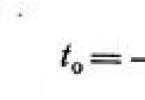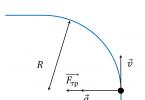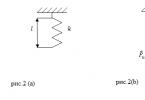Mercedes-Benz is a German company specializing in the production of passenger cars and engines, founded in 1926. Currently, it is a subsidiary of the Daimler-Benz concern. The headquarters is located in Stuttgart.
After the death of Gottlieb Daimler in 1900, the car production business was continued by his son Paul and engineer Maybach. Wilhelm Maybach, Gottlieb Daimler's loyal assistant, took over all management of the company. In 1900 he began to develop a new car. It had a classic arrangement of parts - the engine and radiator were located in front under the hood, the drive was carried out through a gearbox to the rear wheels. The new car had a 4-cylinder engine with 35 hp. The first sample was made in the form of a two-seater racing car. The model was named Mercedes, in honor of the daughter of one of the company's co-owners - the Austrian entrepreneur, diplomat and avid racing driver Emil Jellinek. Using this car of an improved design, at the next race in March 1899, Jellinek won, glorifying the Daimler company and the name Mercedes throughout the world. Since that time, all Daimler passenger cars began to be produced under the Mercedes brand. The first Mercedes itself served as the basis for the creation of a more advanced Mercedes Simplex car, which ushered in the era of the most powerful and comfortable cars of this brand.
Daimler decided to use a good name and registered the name. as a trademark. in 1902. And for the personally built car of Mr. Emile Jelinek, a personal name was given: “Emile Jelinek-Mercedes”.
In 1921, Mercedes became an innovator in the production of supercharged cars, and in 1923 it relied on a model with a six-liter engine, which became the base for the modification with a short-wheelbase chassis - Model K, and then Model S. On its basis, a new modification was created - Mercedes Model SS , with a 7-liter supercharged engine producing 200 hp.
At this time, the most outstanding engineers who created the name of the Deimler-Benz concern were Ferdinand Porsche, Fritz Nallinger and Hans Nibel.
The first production cars were equipped with a powerful engine capable of developing power up to 140 hp when the supercharger was turned on, then the displacement of this engine was increased to 7 liters, which served as the starting point for the creation of the SSK sports car with a 170/125 hp engine. s.. and the speed limit of such models has already reached about 160 km/h. The next stage was an improved and shortened version of the “SSKL” with a 300 hp engine. - the undisputed favorite of numerous sports competitions of those years.
In 1926, Deimler Geselschaft and Benz und Co began negotiating a merger, and the result of their union was a three-pointed star, symbolizing the three elements subject to the concern's cars - air, water and earth. This official emblem of Daimler Sr.'s company became common to the new concern, and cars were supplied to the market under the Mercedes-Benz brand.
So, by the 1930s, Mercedes-Benz had established itself as a designer and manufacturer of luxury cars when Hans Niebel produced the 770 Grosser. Under the hood of this giant hid a 7.7-liter supercharged engine, so the super-powerful car for that time was in particular demand among high-ranking customers, including ex-Kaiser Wilhelm II and Emperor Hirohito of Japan, and the next modification of the car, launched into production only in 1938-1939 years, was intended exclusively for the top of the “Third Reich”. It featured a modernized engine from the 770 Grosser model, which developed a power of 230 hp with the compressor turned on. plus a new product from the concern - a completely new tubular frame, as well as independent front and rear suspensions, tested on racing cars. The average consumer was offered a fairly cheap Type-170 model, with a tubular frame, independent front and rear suspension, production of which began in 1931.
A few years later, the concern began producing the first diesel passenger cars, offering customers the 2.6-liter Type-260 D, and the design team led by Porsche was already preparing rear-engine models for production: “130 N”, “150 N” and “170 N”. , which were of great interest (approximately 90,000 such cars were produced until 1942) - a huge figure for the automotive market at that time.
In the early 40s in Germany, the demand for luxurious, powerful Mercedes cars increased sharply. They were produced on special orders for heads of state and government, high-ranking Nazis, as well as those for whom traditional cars seemed not ambitious enough, by the entire Mercedes-Benz plant in Stuttgart.
After World War II, Mercedes returned to motorsport and even won the 1952 24 Hours of Le Mans. In 1963, the “600” model was released, which, according to its manufacturers, was supposed to compete with Rolls-Royce in the automobile market.
Mercedes G–class is a series of off-road vehicles. The small demand for these rather expensive cars, characterized by enviable durability and cross-country ability, entails a relative constancy of the design and a minimum of changes. The new generation was presented in Paris in September 2000.
When in November 1979 the new generation of large executive sedans S-class (factory body index W126) of the Daimler-Benz automobile concern was presented to the public, it was already announced that they would become the best cars of the 1980s. And this turned out to be true. In May 1991, the company officially announced the cessation of production of the W126 model range.
In the 80s, Japanese companies began to set the tone in the luxury car market. However, European automakers bravely took up the fight: an example of this is the latest Mercedes S-class models in their 12-cylinder version, which confirmed the high competitiveness of German technology. The famous Mercedes 600S has super power and reliability, is capable of sharp turns despite its size, and has many other excellent characteristics, which is why it is considered to be the best car produced by this company today.
Mercedes CL C215 is a luxury car with a coupe body. The 126 series model was first introduced back in 1981, the 140 series in 1992 (platform type C215). In 1999, the model range was replenished with new modifications - CL 600 and CL55AMG.
With the advent of the 190 model (body serial number W201) in November 1982, Mercedes-Benz took the lead in prestige in the European D-class car segment. In September 1983, the long-awaited 190D model premiered, which immediately became popular among taxi drivers. In May 1993, at the Daimler-Benz plant in Bremen, the model with the W201 body was changed to C-class sedans (W202).
Mercedes E-class, a series of upper middle class cars. First shown in 1984. A new generation appeared in 1995. In Frankfurt in 1997, the E 55 AMG modification and V8 engine were presented. Since 2000, models have been equipped with 270 CDI and 320 CDI engines.
The most popular Mercedes-Benz of all time was the series with the factory body index W124. In total, more than 2.7 million copies were produced over eleven years. The W124 range of four-door sedans was introduced in November 1984 in seven engine versions.
Mercedes SL is a luxury sports car with a roadster body and a removable roof. The model was first presented in Geneva in 1989. In 1992, the model range was replenished with a new modification - SL600. In the spring of 2001, a new generation of these machines appeared.
The debut of the S-class - W140 in Geneva in 1991 created a sensation. "Super" S-class! In terms of size, luxury and interior space, as well as the quality of materials used, the W140 was unmatched. Production of the much-loved “elephant” was stopped in the second half of 1998, replacing it with the newest, more compact (at least externally) S-class with a W220 body.
For the first time, the Mercedes C series, a middle-class car (sedan), was shown in April 1993. Since the fall of 1995, it has been equipped with a compressor, since June 1997 - with 2.4 liter and 2.8 V6 engines. A new generation of models appeared in the spring of 2000.
The new C-Class Sport Coupe, equipped with a newly developed 2.0-litre supercharged engine, is one of the most dynamic vehicles in this segment.
The second generation of small Mercedes-Benz called C-class (body of the factory W202 series) was born in April 1993. In the winter of 1996, the four-door sedan in the W202 family was supplemented with a five-door Touring station wagon (abbreviated as T).
The Mercedes-Benz SLK, a two-seat roadster with a folding roof, was first presented in April 1996 in Turin. In January 2000, a model with an updated design and a 3.0-V6 engine appeared. The car received more than 35 international prizes and awards, including: “Golden Steering Wheel” (Germany, 1996), “The Most Beautiful Car in the World” (Italy, 1996), “Car of the Year” (USA, 1997), “Best Convertible in the World” (Germany, 1998), “The Most Popular Convertible” (Italy, 1999).
The Vito truck family (Mercedes-Benz V - class) won the title of best van of the year in 1996. The Sprinter family includes 9 basic models and 137 modifications. Main body types: all-metal and cargo-passenger vans, as well as a minibus with 15 seats.
Mercedes ML combines the most important characteristics of an SUV, minivan, station wagon and passenger car, being a multi-purpose vehicle. The family of all-terrain vehicles with permanent all-wheel drive are manufactured in the USA. The model was first introduced in 1997. The M-Class delivery program for Europe includes three model options: the base ML 230; The 6-cylinder model ML 320 and the 8-cylinder version ML 430. In 2000, these cars did not change, but the model range was supplemented by two new basic options - the diesel ML270 CDI and the tuning ML55 AMG.
Since October 1997, the Mercedes-Benz A-Class family of compact cars has been successfully sold. In 2000, this family remained virtually unchanged.
Mercedes-Benz CLK is a family of cars with coupe and convertible bodies of an intermediate class between C and E, created on the basis of the C class. The CLK model with a coupe body was first shown in the winter of 1997 in Detroit. In 1998, a convertible was added to the lineup; in the summer of 1999, the design of the cars was updated.
The Mercedes-Benz CLK-GTR is a unique road version of the GTR Grand Turismo class racing car. Limited edition production (25 pcs.). First performance - November 1998.
In an effort to expand its product range, the company launched the production of a completely new car, the Smart compact car.
1998 - Merger of Daimler-Benz AG and Chrysler Corporation.
The Mercedes Vision SLR Roadster Concept, a two-seater sports car, was first unveiled in Detroit in July 1999. The model is used in Formula 1 racing.
Mercedes Vision SLA Concept, compact roadster. Presented as a concept model at the Geneva Motor Show in 2000.
Mercedes-Benz remains at the top of the automotive industry, just as it was 100 years ago. By making high-quality cars and engines, the star concern with the famous three-pointed star brand has consistently maintained a leading position in the automotive industry and high competitiveness for a century.
The world's oldest manufacturer of trucks (since 1896) and diesel cars (since 1924), Daimler-Chrysler AG has existed in its current form since 1998. Then the German concern Daimler-Benz AG (since 1926) annexed the third largest American manufacturer Chrysler Motors (since 1924), creating the fourth largest transnational concern in the world. The DC concern ranks third in the world in the production of trucks. The largest German automotive division produces all types of trucks and commercial vehicles with a gross weight from 2.7 to 33 tons.

The first half of the 90s was marked by the struggle to reduce the toxicity of exhaust gases and the preparation of fundamentally new trucks. Models of the light series “T2” (“609/814”) and the new medium range “LK” (“711/1517”), having received “clean” diesel engines with a capacity of 105-170 “horses”, began to be called “Ecovan” and “Ecoliner”, respectively. The heavy “MK” and “SK” series (models “1417/3553”) were produced in 55 basic versions (4×2/8×8 with engines with a capacity of 165-530 “horses”, with six types of cabs. Since 1992, on saddle On the SK1844/1944LS tractors, a more spacious and comfortable Eurocab cabin with an internal height of 2110 millimeters was installed.

Since the mid-90s, Mercedes-Benz began a complete replacement of its entire European program. At the beginning of 1996, the MB100 series was replaced by the front-wheel drive Vito range with a gross weight of 2.6 tons (models 108D/114) with transverse engines of 79-143 horsepower. In January 1995, at the Brussels Motor Show, the Sprinter delivery vehicles of the new light TIN range were presented, awarded the title “Van of the Year”. By 2001, it consisted of several dozen options from “208D” to “616CDJ” (79-156 hp) with bodies with a capacity of 7-13.4 m3.

The “T2” series was replaced in 1997 by the “Vario” range with a gross weight of up to 7.5 tons (models “512D/815D”) with low-toxic diesel engines of 115-136 horsepower, disc brakes and ABS. The title of “Truck of 1997” was given to the new heavy range “SKN” or “Aktros”, consisting of targets “1831/4157” with V6 and V8 engines (313-571 hp) with electronic control, air suspension, disc brakes, ABS and ASR, three types of cabins with an internal height of up to 1960 millimeters. In 1999, the title “Truck of the Year” was given to the Atego car of a new medium range (models “712/2628”) with engines of 122-280 “horses” and 14 wheelbase sizes.

In 1998, the NAV plant began production of Econik low-loader chassis with a 4-seater cab, diesel or gas engines, automatic transmission and electronically controlled air suspension. At the end of the 20th century, Mercedes-Benz remained the world's largest manufacturer of trucks. It owns 14 factories in Germany and 25 enterprises around the world. The annual production volume exceeds 420 thousand cars. On May 7, 1998, Daimler-Benz strengthened its position by merging with the American Chrysler Corporation and creating a new transnational concern, Daimler Chrysler.
(Western Star). In the 21st century, its staff reached 273,216 people (as of December 31, 2008), and its total income amounted to 1.4 billion Euros (2008).
©. Photos taken from publicly available sources.
Mercedes-Benz is today one of the brands of the truck division (Truck Group) of DaimlerChrysler Corporation and the leading brand in truck sales in the world. Production facilities and car factories where assembly is carried out Mercedes trucks located in Germany, France, Turkey, Mexico. Every year, over 140 thousand trucks are supplied to consumers under the Mercedes-Benz brand, half of them to Western European countries, where Mercedes-Benz has the largest market share among European and global manufacturers - 22%.
Model range of Mercedes trucks (Mercedes Trucks)
However, at the same time Mercedes trucks are just part of the DaimlerChrysler truck empire. The Truck Group of the German-American concern includes, in addition to Mercedes-Benz, such brands and productions as Sterling, Western Star and Thomas Built Buses in America and Mitsubishi Fuso in Japan. In total, the DaimlerChrysler concern annually sells over 530 thousand trucks in the world for an amount close to 32 billion Euros.
The Mercedes-Benz heavy-duty vehicle lineup includes three main series of trucks: , as well as Econic and Unimog trucks, offered by the company in some regions.
In Russia, sales and servicing of cargo and light-duty vehicles Mercedes-Benz trucks, including used trucks, is handled by DaimlerChrysler Automobiles RUS CJSC. The brand's clients are offered individual financing models for new and used trucks and light-duty vehicles.



